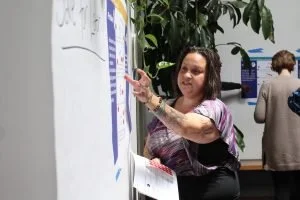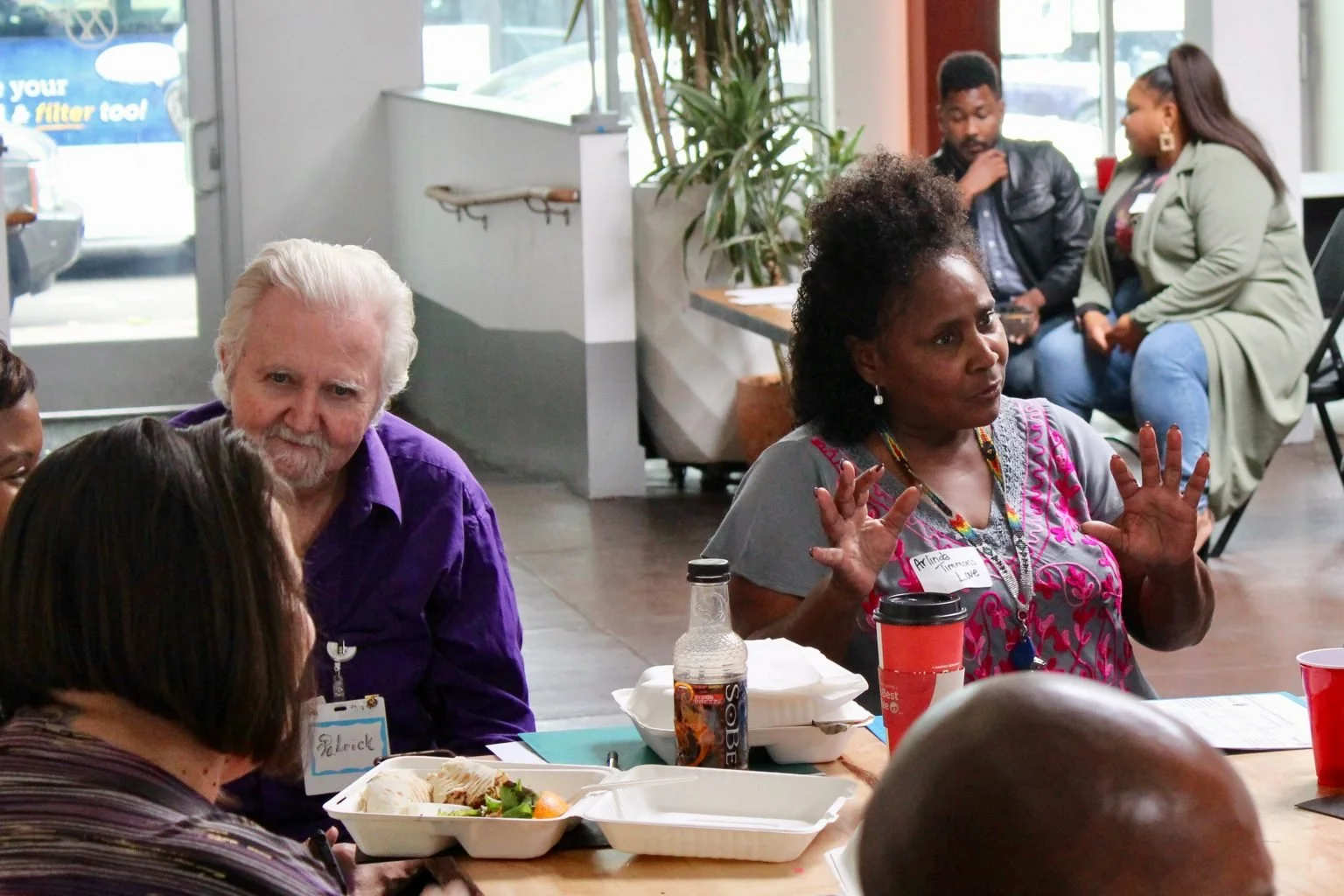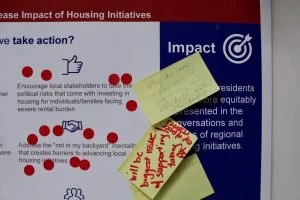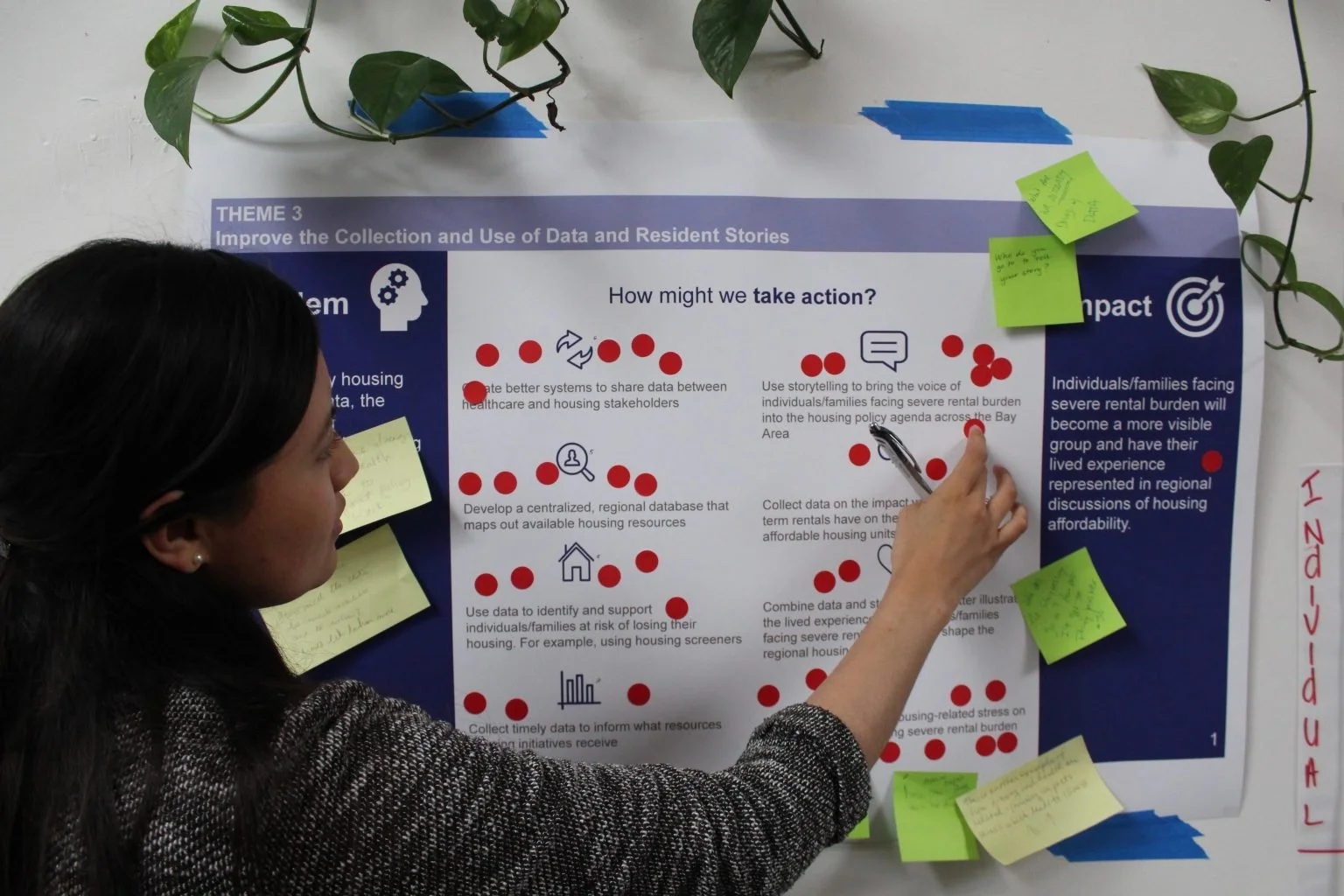Community Informed Programming in a Time of Change
“Our connection to our communityallowed us to be responsive towhat was happening during COVID.”
Lauren Pennachio, Bay Area Health Justice Collective Manager
In uncertain times, there’s power in being able to leverage the collective strength of the community. For the Bay Area Health Justice Collective’s (BAHJC) Housing is Health project, a Data Across Sectors for Health (DASH) CIC-START grantee, prioritizing community voice was critical even during COVID.“
“Our connection to our community allowed us to be responsive to what was happening during COVID,” Manager Lauren Pennachio says. “It was clear in those first few weeks of the pandemic, as we watched the unemployment numbers rise and the shelter in place orders take place that we needed to respond. Suddenly working on MOUs and data sharing agreements didn’t feel as urgent or necessary.”
Pennachio’s team implements an “education first approach to policy.” Their network (composed of healthcare, public health, and social service agencies alongside an over-representation of community members) works to bring a health equity lens to housing discussions. They identified their desire to better understand the policies that are (and are not) in place to start this work. The team had planned their first education and advocacy convening to take action on this focusing on tenant protections, titled Know Your Rights, Know Your Resources, Use Your Voice. The meeting was planned for March 16th, two days before the Bay Area implemented its shelter in place order.
“We told our Advisory Group that we didn’t feel comfortable having the meeting; we didn’t want to put people’s lives in danger,” Pennachio recalls. The Advisory Group agreed but told them they needed the information now more than ever.
“The need is great to create groups, documents, podcasts and webinars that promote an awareness of the problems and complications within the housing/homelessness/health triad. The three conditions are never static. They are constantly interacting, and they are part of a core of urgent national and international agendas,” says Patrick McKenna, an Advisory Group Member. Patrick works as a Patient Advisor at a large hospital and clinic. “The hospital serves the city's financially impaired and homeless.” He understands the complexities of health and housing and serves on committees where this work intersects. “As a member of the Advisory Group, I am able to understand and participate in a unique world combining health and housing as it affects those living in poverty,” he says.
Under the Advisory Group’s guidance, the team shaped a COVID response focused on sharing timely resources, policy news and ways to advocate for tenants’ rights. Information was shared virtually through establishing a newsletter which featured interactive videos spotlighting local subject matter experts from Western Center on Law and Poverty, Tenants Together, Bay Area Legal Aid, and the Housing Rights Committee of San Francisco. This pivot in engagement with their community was met with gratitude, a stronger network, and a greater number of members.
“The content that BAHJC shares is so right now, that I usually copy/paste the newsletter into different Facebook posts and tag people. I manage five Facebook pages, and each page has a specific purpose, but BAHJC material is shared on three of those five pages,” says Jo Bruno, an Advisory Group member. The material has also been shared on partner agency websites, in partner newsletters, and was the basis for the trainings Pennachio has given to county healthcare social service and community health workers.
For Patrick, he has been able to use the information in a variety of ways. “On a personal level, I can share BAJHC content in social conversations. The BAJHC recently produced a plethora of informative podcasts and newsletters on many specific conditions relating to housing and health which has allowed me to introduce ideas to many people in daily conversations.”
Community Voice Has Guided Their Work Since the Beginning
BAJHC ’s connection to community members and utilizing their feedback isn’t new. It is an approach that has guided their work from the beginning. BAJHC has established a tried and true approach to ensuring all community voices are heard and acted upon and that has made all the difference.
“Having an advisory group isn’t enough - as soon as you create a select group of people you’re introducing bias and providing privilege and power. So we don’t just rely on our advisory group, we actively amplify the voice of all community members to make major decisions.” This has been done through a method called right of first refusal, where community members have the right to downright refuse specific actions that they do not agree with, before it is open to the broader network for voting.’
“The other method the group has used is weighted voting, in which the person who is most impacted by the decision, a community member who’s lived in the neighborhood for 50 years, who’s not acted in an official capacity and who’s voluntarily attending the meeting, gets more votes than staff members who attend as part of their official capacity as a public health/social service worker. The group also relies heavily on network feedback gathered through surveys - which will help inform the next virtual series focused on Affordable Housing.
“I have been in many circles when community decisions were made but the community of all white decision makers didn't put into consideration how their decision impacted the community they were making choices for, who were prominently people of color,” Jo says, “I will not participate in any community decision body that doesn't have a voice for people of color. Usually, I tend to bring that voice when the other decision makers don't have knowledge. I will also advocate to have a person of color in the decision-making process. Again, if diversity isn't acknowledged, I will raise awareness because there's no way to make a community decision if the community is overlooked.”
Patrick agrees. “Diversity is a key dynamic in the creation of effective and acceptable programs and solutions. If a meeting is dominated by those who lack a lived experience, stop the meeting to determine the efficacy of such a group. Leaders would need to reconstruct a representative group. Housing and health issues cannot be addressed properly,” he says.
The Bay Area Housing Health Justice Collective’s Housing is Health project is a fantastic example of how intentional consideration of one’s network allows for inclusive collaboration, a prioritization of needs, and incredible flexibility during this time of uncertainty. To engage with their work and COVID response, visit their website here.
Resources:
Policy shifts specific to COVID19 (updated for May 2020) (Western Center on Law & Poverty)
How do legal aid services support those facing eviction? (Bay Area Legal Aid)
What is tenant organizing, and how can we all work to #CancelRent? (Tenants Together)
What's housing counseling? (Housing Rights Committee of San Francisco)
